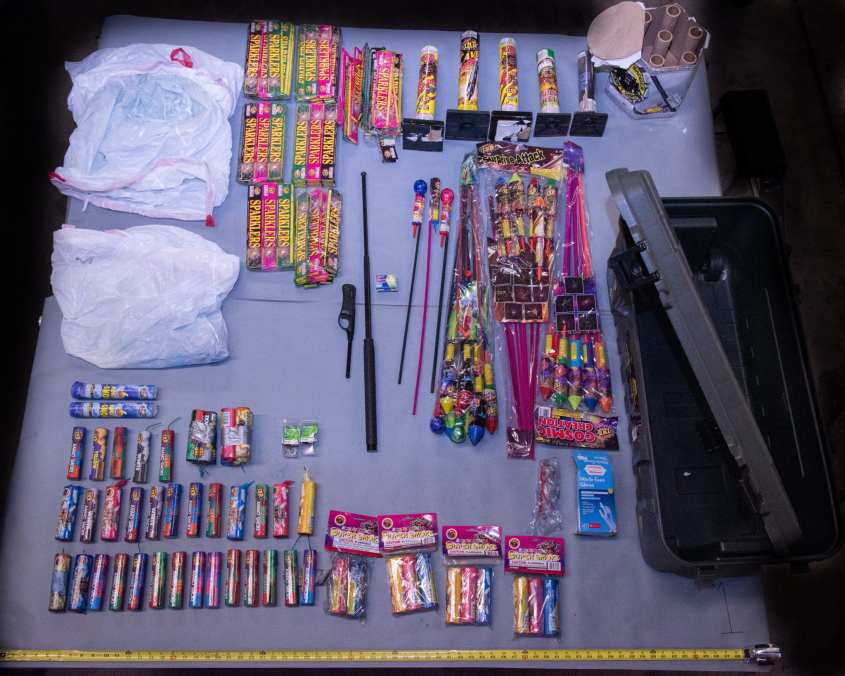
Elected officials and the police chief of Seattle, who holds the most powerful unelected position in city government, have come together in opposition to a form of behavior that all agree is inexcusable, reprehensible, and violates “every democratic principle that guides our nation.”
No, I’m not talking about teargassing and shooting rubber bullets into the bodies of protesters, or the fact that the budget for the police department dwarfs that for human and social services. I’m referring to the fact that protesters are showing up at officials’ homes—specifically, the homes of most city council members, the mayor, the county executive, and Police Chief Carmen Best—to demonstrate for police defunding and against police violence, including the violence against protesters that helped spur the current protest movement.
Over the last few weeks, the mayor, council members, and their surrogates have suggested repeatedly that protesting outside these officials’ houses, in and of itself, is a violent act that exists beyond the bounds of “decency” and civility. They have maintained, further, that spray-painting the street in front of people’s homes—an act that has recent local precedent at the Capitol Hill Organized Protest, where slogans briefly filled pavement and walls in a neighborhood where hundreds of people live—is an act of violence. (The fact that people in the CHOP area live in apartments, as opposed to the officials who own one or more houses, speaks volumes about which Seattle residents these officials believe have a right to peace and quiet in their homes.)
This weekend, the Seattle Times also condemned the protests, saying that “nighttime marches to council members” are not a legitimate form protest but a form of “bullying” and “intimidating” that is “downright Trumpian.”
To give just one example: A recent email from the Neighborhoods for Safe Streets PAC, which was originally formed in opposition to bike lanes on 35th Ave. NE, suggested that protesters who left “‘defund the police’ literature” at Juarez’s doorstep were “trespassing” and engaging in “illegal intimidation tactics.” (For the record, leaving campaign or other political literature at people’s doors is very common, especially during elections, and is not illegal.)
This weekend, the Seattle Times also condemned the protests, saying that “nighttime marches to council members” are not a legitimate form protest but a form of “bullying” and “intimidating” that is “downright Trumpian.”
And just yesterday, police Chief Carmen Best applauded residents of rural Snohomish, some of them reportedly armed, for blockading roads with pickup trucks and prohibiting protesters from walking down public streets toward “a residence” she owns in the town.
“My neighbors were concerned by such a large group, but they were successful in ensuring the crowd was not able to trespass or engage in other illegal behavior in the area, despite repeated attempts to do so,” Best wrote in a letter demanding that the city council denounce the protests. “These direct actions against elected officials, and especially civil servants like myself, are out of line with and go against every democratic principle that guides our nation.” Best’s letter concluded by accusing protesters of “engaging in violence and intimidation.”
The C Is for Crank is supported entirely by generous contributions from readers like you. If you enjoy breaking news, commentary, and deep dives on issues that matter to you, please support this work by donating a few bucks a month to keep this reader-supported site going. If you don’t wish to become a monthly contributor, you can always make a one-time donation via PayPal, Venmo (Erica-Barnett-7) or by mailing your contribution to P.O. Box 14328, Seattle, WA 98104. I’m truly grateful for your support.
In fact, the practice of protesting at powerful elected and unelected officials’ homes has a very long tradition in the United States, going back at least to the Civil Rights movement of the 1960s. The principle behind protests of this kind over the decades has been that people feel unable to access their leaders through “ordinary” means, such as requesting meetings and showing up at City Hall, so they take the protest to their houses.
In Seattle, the tradition of protesting outside leaders’ homes has recent precedent in the SHARE/WHEEL protests of 2009, when activists demanding funds for bus tickets camped overnight at city council members’ houses, in 2012 when homeless advocates showed up at then-mayor Mike McGinn’s house, and in 2016 when Black Lives Matter protesters set up shop outside former mayor Ed Murray’s house to protest his support for a new youth jail.
Then as now, some officials—including then-council member Bruce Harrell—came out to talk to the protesters and listen to their concerns, an act that defused the situation considerably, since, again, one motivation for showing up at people’s houses is frustration at not feeling heard.
Today, protests at elected leaders’ homes aren’t just normalized—they’re typical. As much as Seattle likes to see itself as unique in both our political progressiveness and our collective response to injustice, protesters are gathering outside the homes of local officials in cities across the country—from St. Petersburg, FL to New York to San Francisco. To watch these protests is to watch a norm shifting in real time: Standing outside elected officials’ houses and waving signs or painting on the street was a phenomenon that wasn’t all that common—until now, when it very much is. Continue reading “Nonviolent Protests at Officials’ Houses Are Protected Speech. Political Leaders Want to Shut Them Down.”








